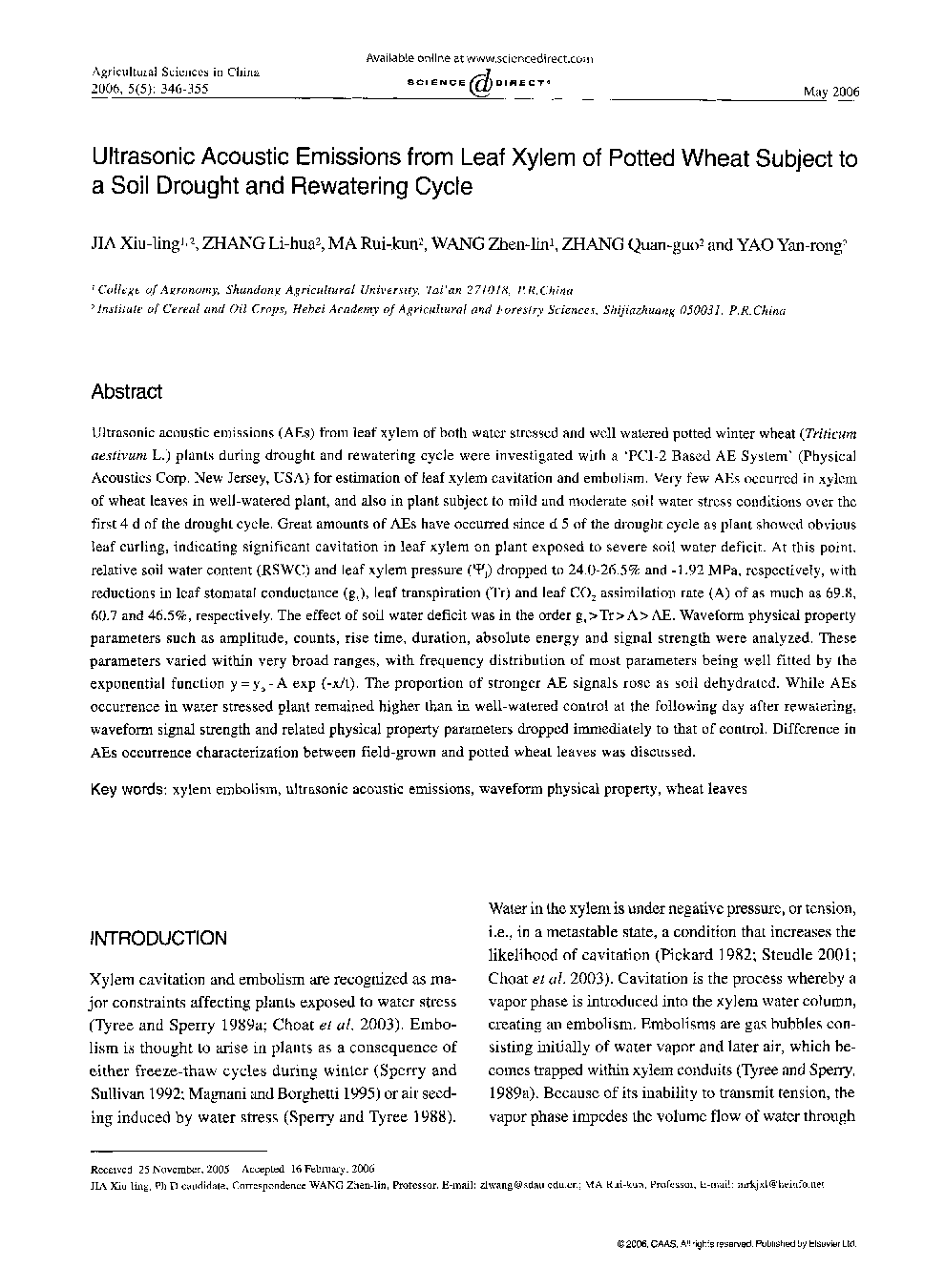| Article ID | Journal | Published Year | Pages | File Type |
|---|---|---|---|---|
| 4491049 | Agricultural Sciences in China | 2006 | 10 Pages |
Ultrasonic acoustic emissions (AEs) from leaf xylem of both water stressed and well watered potted winter wheat (Triticum aestivum L.) plants during drought and rewatering cycle were investigated with a ‘PCI-2 Based AE System’ (Physical Acoustics Corp. New Jersey, USA) for estimation of leaf xylem cavitation and embolism. Very few AEs occurred in xylem of wheat leaves in well-watered plant, and also in plant subject to mild and moderate soil water stress conditions over the first 4 d of the drought cycle. Great amounts of AEs have occurred since d 5 of the drought cycle as plant showed obvious leaf curling, indicating significant cavitation in leaf xylem on plant exposed to severe soil water deficit. At this point, relative soil water content (RSWC) and leaf xylem pressure (Ψ1) dropped to 24.0–26.5% and −1.92 MPa, respectively, with reductions in leaf stomatal conductance (gs), leaf transpiration (Tr) and leaf CO2 assimilation rate (A) of as much as 69.8, 60.7 and 46.5%, respectively. The effect of soil water deficit was in the order gs >Tr> A> AE. Waveform physical property parameters such as amplitude, counts, rise time, duration, absolute energy and signal strength were analyzed. These parameters varied within very broad ranges, with frequency distribution of most parameters being well fitted by the exponential function y = y0-A exp (−x/t). The proportion of stronger AE signals rose as soil dehydrated. While AEs occurrence in water stressed plant remained higher than in well-watered control at the following day after rewatering, waveform signal strength and related physical property parameters dropped immediately to that of control. Difference in AEs occurrence characterization between field-grown and potted wheat leaves was discussed.
